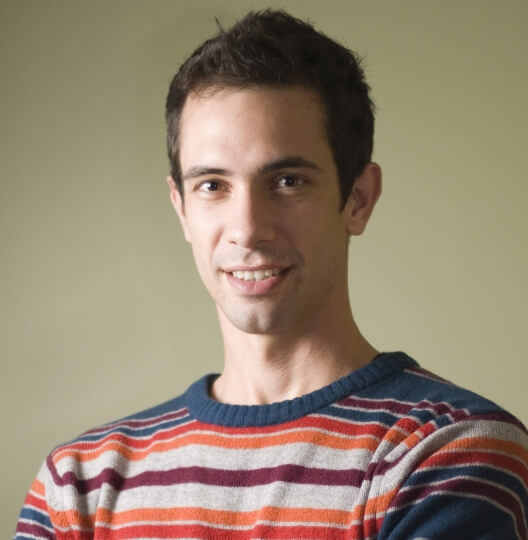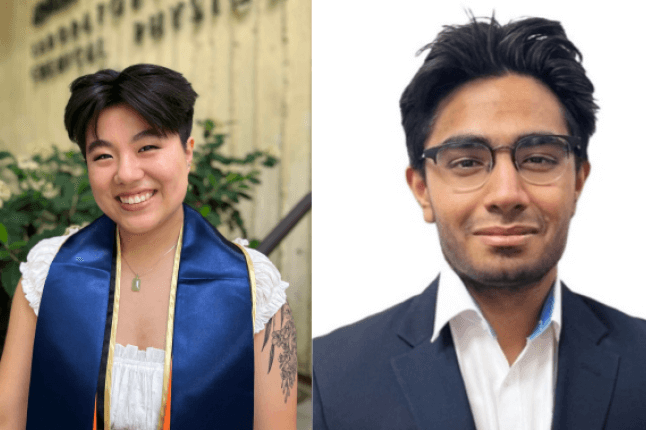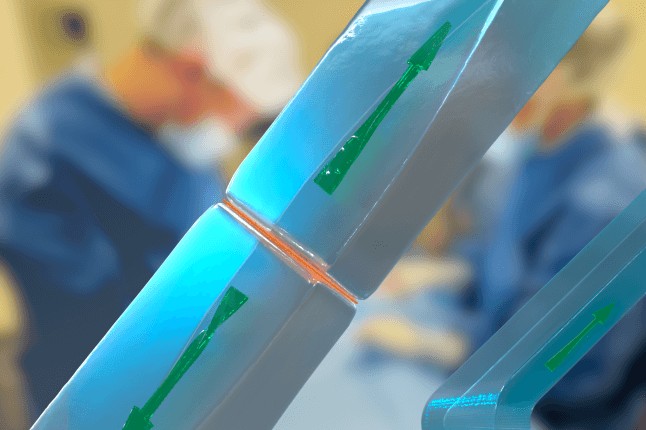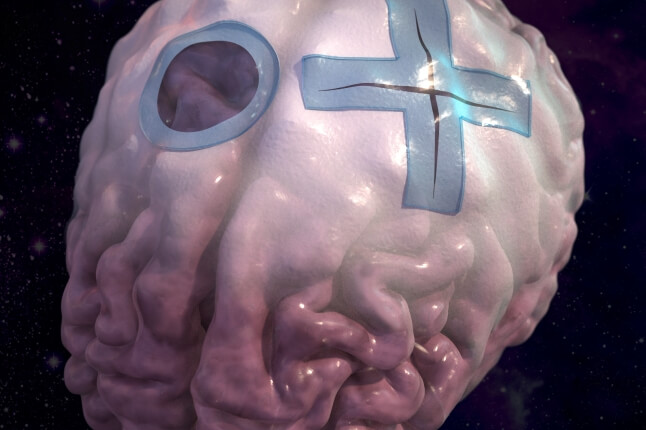News
Otger Campàs
Otger Campàs knows all about conquering language barriers.
As a native of Barcelona, he grew up speaking Catalan and Spanish. While an undergraduate at the University of Barcelona, he studied the elegant language of theoretical physics. He dabbled in cooking there, too, and heard about unconventional techniques like “spherification” and “culinary foams.”
In his postgraduate work, Campàs’ research exposed him to genetics and cell biology, fields with a vocabulary all their own. His interest in biophysics soon carried him to the Curie Institute in Paris, where he earned a Ph.D. and became fluent in French.
Over the years, learning the lingo has been a rite of passage for this interdisciplinary researcher.
Campàs, now a postdoctoral fellow at the Harvard School of Engineering and Applied Sciences (SEAS),has found himself translating yet again: integrating biology into mathematics, explaining physics to chefs, and designing a curriculum to teach science to non-majors. And his English has sharpened along the way.
“In the beginning, the differences in language are always complicated,” Campàs says.
Interdisciplinary work presents two challenges. The first is literally a language barrier. “If you do not know the specific vocabulary of a discipline—for example, the names of the proteins, or what a cell is—it is very difficult to communicate with people working in it,” he says.
The second challenge lies in understanding what is relevant or interesting about a foreign field. Learn to appreciate the culture of biology, he says, and suddenly “you are able to think about the same problem from a new perspective.”
From beaks to teeth
Campàs focused his undergraduate training on particle physics but he found complex biological systems to be more interesting as a theoretical challenge.
In search of a creative outlet, he found a winning compromise in biophysics, exploring how molecular forces within a cell collectively drive cellular movements.
Campàs’ research today focuses on problems related to morphogenesis; he studies how genetics and physical factors cause developing organisms to take on new shapes.
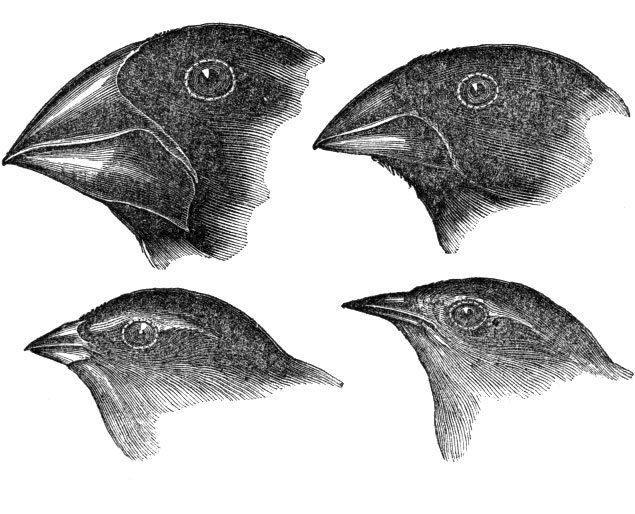
The varied beaks of finches, the celebrated textbook example of morphological diversity, inspired Charles Darwin to formulate the theory of evolution. (Illustrations by John Gould, adapted from C. Darwin [1845], Voyage of the Beagle, 2nd ed.)
In a paper with Michael P. Brenner, Glover Professor of Applied Mathematics and Applied Physics at SEAS, and Assistant Professor Arkhat Abzhanov and other colleagues in the Department of Organismic and Evolutionary Biology (OEB), he quantified the morphological differences in the beak shapes of Darwin’s finches.
His results showed that morphological diversity of complex traits, like beaks, can be quantified with a very small number of parameters. Campàs could hardly believe how “clean” the result was.
But quantifying complex biological systems is not always straightforward. Knowing the general equations for tissue growth, for example, is only one part of the puzzle. Theory alone cannot produce the parameters for each tissue’s material properties.
As a result, Campàs finds himself alternating between theory and experiment, measuring various aspects of physical fields in the lab, and then connecting those findings back to his equations. This approach forces him to make alliances both within SEAS and across Harvard.
“You need to learn developmental biology; you need to learn cell biology; you need to learn genetics, theoretical physics, material science…” he says. “If you only focus on one aspect, it will be difficult to solve the problem.”

A developing butterfly wing, stained to reveal actin (blue), chromatin (cyan), and phosphorylated histone H3 (red). (Image courtesy of Otger Campàs and MBL Woods Hole.)
As a case in point, Campàs is now investigating tooth development with Donald Ingber, who himself is split between Children’s Hospital Boston, Harvard Medical School, and the Wyss Institute for Biologically Inspired Engineering at Harvard.
Campàs has also worked with MacArthur “genius” L. Mahadevan, Lola England de Valpine Professor of Applied Mathematics at SEAS, a researcher well known for finding beauty in just about everything, from Venus fly traps to the way honey coils.
“They are all amazing scientists,” says Campàs. “Their knowledge is exceptionally broad and they all have their own unique way of approaching the problems. Being exposed to this diversity is extremely enriching.”
From mere curiosity to a global phenomenon
Campàs's willingness to remain intellectually open has most notably fostered a connection that started not in the lab, but in the kitchen.
As a young bachelor, Campàs taught himself to cook using books and videos by the world-famous Catalan chef Ferran Adrià.
“Ferran uses concepts and ideas from very disparate disciplines, from science to art, and this allows him to be extraordinarily creative,” he says.
Cooking, it turns out, has as much to do with physics as biology does. By understanding how an enzyme works, for example, adventuresome chefs have developed the skill to control outcomes—whether they call it “transglutaminase” in cell biology, or “meat glue” in cooking.
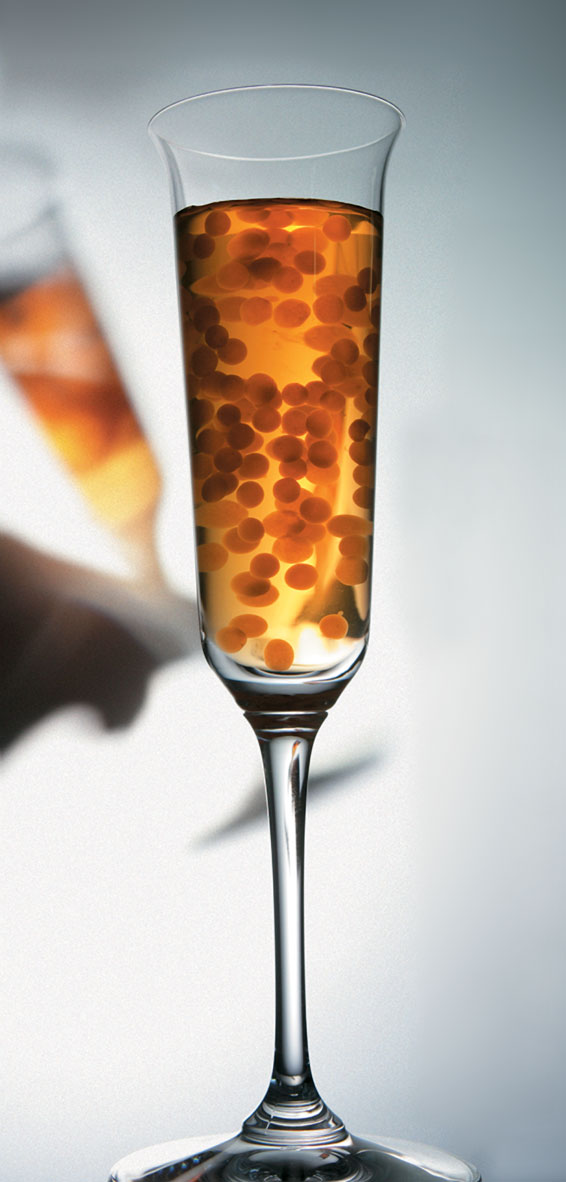 Adrià, whose restaurant, elBulli, holds three Michelin stars and arranges an entire season’s reservations in one week each year, is considered the chef who redefined haute cuisine through the use of laboratory techniques.
Adrià, whose restaurant, elBulli, holds three Michelin stars and arranges an entire season’s reservations in one week each year, is considered the chef who redefined haute cuisine through the use of laboratory techniques.
His famed use of spherification (see photo of melon caviar suspended in prosciutto broth) and introduction of culinary foams known as “airs" are drawn straight from soft-matter physics.
For Campàs, the overlap became more than just a curiosity two years ago, when SEAS was planning an annual lecture designed to engage the public in science.
Campàs wanted to invite Adrià as the guest speaker, and asked David Weitz, Mallinckrodt Professor of Physics and Applied Physics, if it was possible.
As he recalls, Weitz’s response was, “Do you know who Ferran Adrià is? We’re never going to get him to come to Harvard.”
Undeterred, Campàs wrote to the chef—in Catalan, of course—and offered to meet with him in Barcelona. What followed over the next two years was not just a guest lecture, but a spectacular alliance between Harvard, elBulli, and Adrià’s Alícia Foundation.
The partnership led to the development of one of the most popular general education courses on campus, “Science and Cooking: From Haute Cuisine to the Science of Soft Matter.”
It is a serious science course, but weekly guest lectures by top chefs demonstrate physics in action, with topics like “Olive Oil and Viscosity” or “Browning and Oxidations.”
Campàs developed the syllabus with Weitz, Brenner, and Pere Castells, Research Director at the Alícia Foundation. The course is taught by Weitz, Brenner, Campàs, and Amy Rowat (a postdoctoral fellow in the Department of Physics and at SEAS), with the invaluable help of a group of teaching fellows.
Many students in the course are concentrating in the humanities or social sciences, so presenting soft-matter physics in language they can understand is not easy.
“You have to find a way to explain it,” says Campàs, “but as a physicist you feel somehow handicapped in not being able to use much calculus or algebra. It is an interesting challenge.”
"Michael Brenner and Dave Weitz have been very savvy in doing it so that people can understand," he adds. "They are very engaging and clear in their explanations."
Reporting on the course, the Chronicle of Higher Education's David Glenn wrote that students from all areas were "devouring" the scientific lessons, precisely because of the instructors' lively approach.
Show students an equation and their eyes will glaze over; but show them how to use that equation to make a perfect molten chocolate cake, and suddenly even the most math-phobic undergraduates become engaged.
“If you don’t get excited by that, by the predictive power of science and the beauty of understanding how things work,” Campàs says, “then it is probably difficult to get you excited about science.”
Chefs like Adrià are not only excited, but completely convinced that physics-fueled food is just the beginning.
After Adrià spoke at SEAS in 2008, Campàs and Weitz traveled to Catalonia to serve as scientific consultants for Adrià’s workshop, elBulli Taller.
There, in his homeland, Campàs found himself trying to explain complicated theories to the chefs, while simultaneously translating between Catalan and English for Weitz’s benefit.
“They would tell us, ‘I want to do this, and I have no idea how,’” he says. “’This foam gets unstable when we put it at this temperature. How can we do it differently?'"
"It was great," he recalls. "We were playing like kids."
Whether hunkered down in a lab at Harvard or working in the kitchen of one of the world's most famed culinary masters, Campàs knows how to speak the languages of his colleagues and synthesize elements of his own varied background.
“I think that when you have an idea, it’s not because you’re smart," he says. "It’s because you have particular sets of experiences in life that allow you to make that particular connection.”
Topics: Cooking, Bioengineering, Applied Physics, Applied Mathematics
Cutting-edge science delivered direct to your inbox.
Join the Harvard SEAS mailing list.
